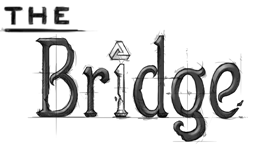 W
WAnt Attack is a ZX Spectrum computer game by Sandy White, published by Quicksilva in 1983. It was converted to the Commodore 64 in 1984.
 W
WAntichamber is a first-person puzzle-platform game created by Australian developer Alexander "Demruth" Bruce. Many of the puzzles are based on phenomena that occur within impossible objects created by the game engine, such as passages that lead the player to different locations depending on which way they face, and structures that seem otherwise impossible within normal three-dimensional space. The game includes elements of psychological exploration through brief messages of advice to help the player figure out solutions to the puzzles as well as adages for real life. The game was released on Steam for Microsoft Windows on January 31, 2013. A version originally sold with the Humble Indie Bundle 11 in February 2014 added support for Linux and OS X.
 W
WThe Bridge is an indie video game designed by American indie developer Ty Taylor for Microsoft Windows, Linux, OS X, Amazon Fire TV, Android, Xbox 360, Xbox One, Ouya, PlayStation 3, PlayStation 4, PlayStation Vita, Wii U, and Nintendo Switch. In the game, the player controls an Escher-like character and the rotation of the 2D environment, which affects gravity based on the changing orientation of the landscape.
 W
WCrush is a 2007 platformer-puzzle video game developed by Kuju Entertainment's Zoë Mode studio and published by Sega for the PlayStation Portable. Its protagonist is Danny, a young man suffering from insomnia, who uses an experimental device to explore his mind and discover the cause of his sleeplessness. Each level of the game, representing events from Danny's life and inspired by artists such as Tim Burton and M.C. Escher, requires the player to control Danny as he collects his "lost marbles" and other thoughts.
 W
WEchochrome, is a puzzle game created by Sony's Japan Studio and Game Yarouze, which is available for PlayStation 3 from the PlayStation Store and for PlayStation Portable (PSP) on either UMD or from the PlayStation Store. Gameplay involves a mannequin figure traversing a rotatable world where physics and reality depend on perspective. The world is occupied by Oscar Reutersvärd's impossible constructions. This concept is inspired by M. C. Escher's artwork, such as "Relativity". The game is based on the Object Locative Environment Coordinate System developed by Jun Fujiki—an engine that determines what is occurring based on the camera's perspective.
 W
WHyperRogue is an independent video game developed by Zeno Rogue. It is a roguelike inspired by the puzzle game Deadly Rooms of Death and the art of M. C. Escher, taking place in the hyperbolic plane.
 W
WMarble Madness is an arcade video game designed by Mark Cerny and published by Atari Games in 1984. It is a platform game in which the player must guide a marble through six courses, populated with obstacles and enemies, within a time limit. The player controls the marble by using a trackball. Marble Madness is known for using innovative game technologies: it was Atari's first to use the Atari System 1 hardware, the first to be programmed in the C programming language, and one of the first to use true stereo sound.
 W
WMonument Valley is an indie puzzle game developed and published by Ustwo Games. The player leads the princess Ida through mazes of optical illusions and impossible objects while manipulating the world around her to reach various platforms. Monument Valley was developed over ten months beginning in early 2013 based on concept drawings by company artist Ken Wong. Its visual style was inspired by Japanese prints, minimalist sculpture, and indie games Windosill, Fez, and Sword & Sworcery, and was compared by critics to M. C. Escher drawings and Echochrome. The art was designed such that each frame would be worthy of public display. After a closed beta test, it was released for iOS on April 3, 2014, and was later ported to Android and Windows Phone. The game received generally favorable reviews. Critics praised its art and sound design, but noted its lack of difficulty and short length. It won a 2014 Apple Design Award, was named Apple's best iPad game of 2014, and sold over two million copies by January 2015; by May 2016, sales of the game exceeded 26 million.
 W
WQ*bert is an arcade game developed and published for the North American market by Gottlieb in 1982. It is a 2D action game with puzzle elements that uses isometric graphics to create a pseudo-3D effect. The objective of each level in the game is to change every cube in a pyramid to a target color by making Q*bert, the on-screen character, hop on top of the cube while avoiding obstacles and enemies. Players use a joystick to control the character.